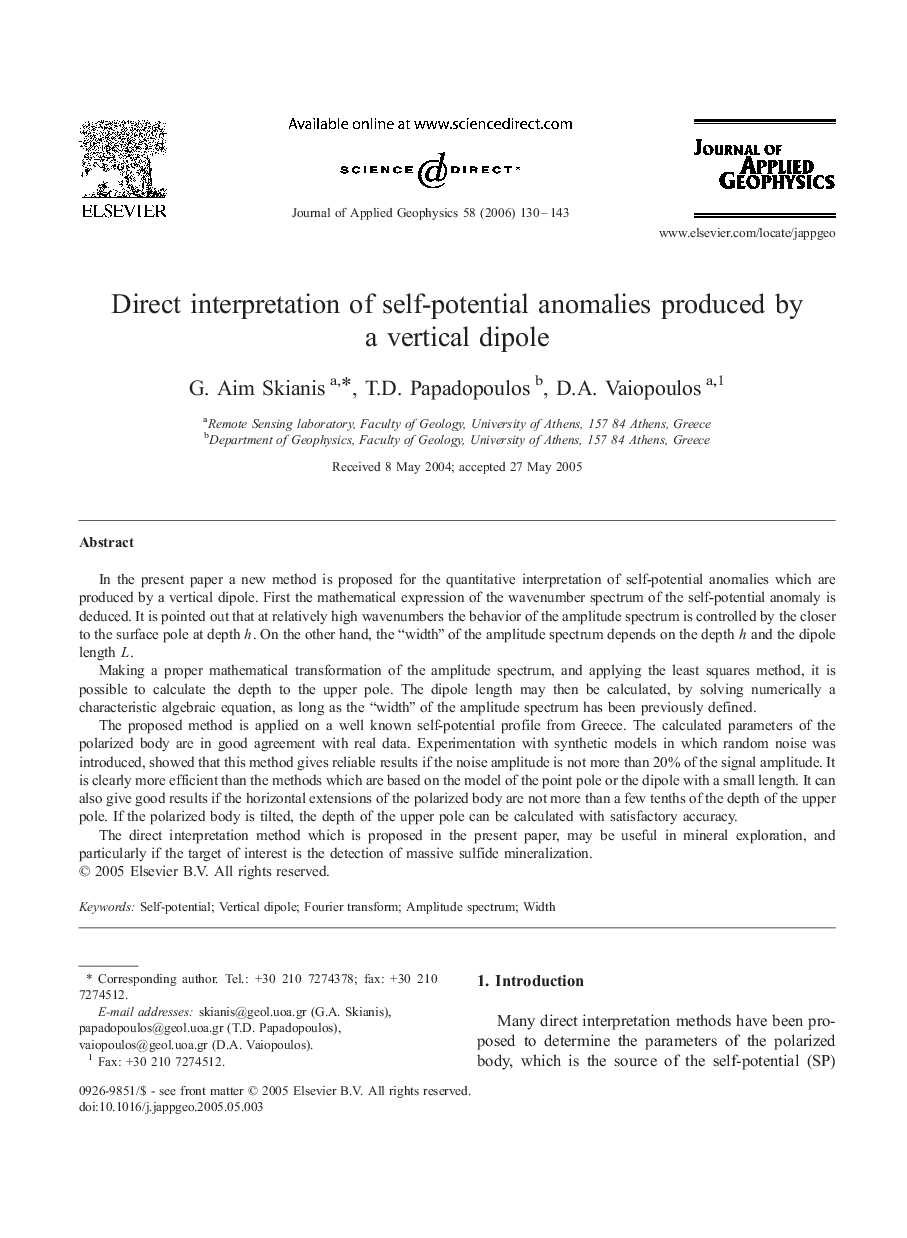| Article ID | Journal | Published Year | Pages | File Type |
|---|---|---|---|---|
| 4741310 | Journal of Applied Geophysics | 2006 | 14 Pages |
In the present paper a new method is proposed for the quantitative interpretation of self-potential anomalies which are produced by a vertical dipole. First the mathematical expression of the wavenumber spectrum of the self-potential anomaly is deduced. It is pointed out that at relatively high wavenumbers the behavior of the amplitude spectrum is controlled by the closer to the surface pole at depth h. On the other hand, the “width” of the amplitude spectrum depends on the depth h and the dipole length L.Making a proper mathematical transformation of the amplitude spectrum, and applying the least squares method, it is possible to calculate the depth to the upper pole. The dipole length may then be calculated, by solving numerically a characteristic algebraic equation, as long as the “width” of the amplitude spectrum has been previously defined.The proposed method is applied on a well known self-potential profile from Greece. The calculated parameters of the polarized body are in good agreement with real data. Experimentation with synthetic models in which random noise was introduced, showed that this method gives reliable results if the noise amplitude is not more than 20% of the signal amplitude. It is clearly more efficient than the methods which are based on the model of the point pole or the dipole with a small length. It can also give good results if the horizontal extensions of the polarized body are not more than a few tenths of the depth of the upper pole. If the polarized body is tilted, the depth of the upper pole can be calculated with satisfactory accuracy.The direct interpretation method which is proposed in the present paper, may be useful in mineral exploration, and particularly if the target of interest is the detection of massive sulfide mineralization.
